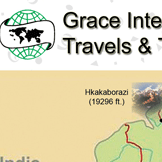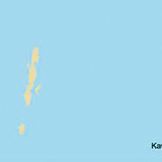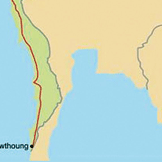!!!Grace Myanmare Return as ASIA MYANMAR GROUP!!!
WE WILL HIT THE WORLD
FIND OUT HERE
Monday, September 17, 2007
Grace Myanmar Return
Posted by
gracett
at
10:04 AM
0
comments
![]()
Tuesday, October 31, 2006
Once in a life time opportunity!!!
![]() Printable View
Printable View
The world’s biggest Bell, the world’s largest book, Gravity defying rock, one legged rower and vegetable plantation floating above the water and one of the world’s earliest civilization can all be found in one place. That is Golden Land, Myanmar!!!
 |  |
 |  |
 |  |
 |  |
Routing | Approx. Departure Time | Approx. Arrival Time | Duration | Places | |
From | To | ||||
Yangon | Nyaung Shwe (Inle) | 12:30PM | 9:00 AM | 3–days/ 2–Nights | Taung Gyi, Inle, Kalaw, Pindaya |
(Inle) Kalaw | Mandalay | 6:00 PM | 8:00 AM | 5-days/ 4-Nights | Amayapura, Sagain, Mingun, PyinOoLwin |
Mandalay | Bagan(By Boat) | 6:00 AM | 7:00 PM | 3 –days/ 2-Nights | Our recommend schedule to travel around in Myanmar. Around Bagan |
Bagan | Yangon | 3:30 PM | 7:00 AM | 1–day/ 1-Night | Around Yangon |
* If you want to travel around with your own schedule, we can also arrange for it.
Our services include:
- Airport pick up
- Arranging your Itinerary
- Providing free necessary information to make your trip a satisfying one.(Hotels & Guest House,Restaurant, Transportation, Currency Exchange & others)
-Accidental Insurance
*If you want to rent your own vehicle, we can also arrange with the cheapest price.
1pax - US $1440 1 pax -> Saloon
2pax - US $720 2,3, ...,10 -> Wagon
3pax - US $590 Above 10 -> Air-con bus
4pax - US $442
5pax - US $354
6pax - US $300
6 pax and above - US $300
*If you want to travel around in Myanmar conveniently, we also have the package tour with the cheapest price.
For Further Information:
Contact Person : Henry
Website : www.gracemyanmar.blogspot.com
Address : Room 555, 20/2 Seree 4 Rd. Praram 9 Soi 43, Suanluang,Bangkok 10250, Thailand
Mobile Phone : 04 1288250
Home Phone : 0-2718 2631 - 9, Ext: 555
Email : grace_tt06@yahoo.com
Booking:
Please provide the following information to us.
-Your Full Name
- Your Passport Number
- No of person who accompany with you
- Flight No
- Arrival Time & Date to Myanmar's Airport
Posted by
gracett
at
10:54 PM
0
comments
![]()
Labels: Asia, Burma - Myanmar
Monday, October 23, 2006
The world's biggest book - Kuthodaw Paya - Myanmar
 The Kuthodaw Pagoda or Maha Lawka Marazein Paya is often called the world's largest book. It is a large walled complex situated at the base of the southeast stairway to Mandalay Hill and was built by King Mindon at the same time he was constructing the Royal Palace. Its central stupa is modeled on the Shwezigon at Nyaung U near Bagan.
The Kuthodaw Pagoda or Maha Lawka Marazein Paya is often called the world's largest book. It is a large walled complex situated at the base of the southeast stairway to Mandalay Hill and was built by King Mindon at the same time he was constructing the Royal Palace. Its central stupa is modeled on the Shwezigon at Nyaung U near Bagan.The Kuthodaw Paya (Pagoda), or Maha Lawka Marazein Paya, contains what often is called the world's largest book. It is a large walled complex situated at the base of the southeast stairway to Mandalay Hill and was built by King Mindon at the same time he was constructing the Royal Palace. Its central stupa is modeled on the Shwezigon at Nyaung U near Bagan. An on-site carved tablet indicates that the pagoda's height is 187 ft 9 in, high, while some guide books list it at 100 ft (30 m). The former includes the platform in the measurement.

The stupa itself, connected to the outside entry by means of a long corridor, is set in the middle of a thirteen acre field of 729 pitaka pagodas or shrines (Dama Cetis). Each shrine contains a marble slab, inscribed on both sides with the Pali script text of a portion the Tipitaka (Pali spelling, or Tripitaka, in Sanskrit), Theravada Buddhism's sacred texts. Taken together, they contain the entire text of the Tipitaka and thus form? the world's largest book. The slabs were carved from white Sagyin Hill marble found just a few miles north of Mandalay. The work of carving began in October 1860 and was carried out in a special hall within King Mindon's Royal Palace. Each slab is 5 ft ((1.5 m) by 3.5 ft (1.1 m) wide and 5-6 in. (12.7 15 cm) thick. The Buddhist scholar/carvers completed their task in May 1869. If spread out horizontally, the slabs would cover a third of an acre (.1 ha); stacked vertically, the pages would rise 340 ft (103 m). Originally the lettering also had a gold leaf veneer. The statistics given here are those given by U Tun Aung Chain, retired Professor of History, Yangon University.
Several sources suggest the important role of the Fifth Buddhist Synod, which King Mindon called in 1872, in the development of the Kuthodaw. It perhaps was at this meeting of 2,400 monks from throughout the country that both authenticated the texts and began the construction of the encasing shrines.
Posted by
gracett
at
2:57 AM
0
comments
![]()
Labels: Asia, Burma - Myanmar
Sunday, October 22, 2006
Myanmar Chinlone - Mystic Ball
Chinlone means “cane-ball” in Burmese. The ball is woven from rattan, and makes a distinctive clicking sound when kicked that is part of the aesthetic of the game. Players use six points of contact with the ball: the top of the toes, the inner and outer sides of the foot, the sole, the heel, and the knee. The game is played barefoot or in chinlone shoes that allow the players to feel the ball and the ground as directly as possible. The typical playing circle is 6.7 meters (22 feet) in diameter. The ideal playing surface is dry, hard packed dirt, but almost any flat surface will do.
Chinlone is over 1,500 years old and was once played for Myanmar royalty. Over the centuries, players have developed more than 200 different ways of kicking the ball. Many of the moves are similar to those of Myanmar dance and martial art. Some of the most difficult strokes are done behind the back without seeing the ball as it is kicked. Form is all important in chinlone, there is a correct way to position the hands, arms, torso, and head during the moves. A move is considered to have been done well only if the form is good.
Myanmar is a predominately Buddhist country, and chinlone games are a featured part of the many Buddhist festivals that take place during the year. The largest of these festivals goes on for more than a month with up to a thousand teams. An announcer calls out the names of the moves and entertains the audience with clever wordplay. Live music from a traditional orchestra inspires the players and shapes the style and rhythm of their play. The players play in time to the music and the musicians accent the kicks.
Both men and women play chinlone, often on the same team. Adults and children can play on the same team, and it’s not unusual to see elders in their 80’s playing.
In addition to the team style of chinlone, which is called “wein kat” or circle kick, there is also a solo performance style called “tapandaing”. This solo style is only performed by women.
To play chinlone well, the whole team must be absolutely in the moment – their minds cannot wander or the ball will drop. All serious players experience an intensely focused state of mind, similar to that achieved in Zen meditation, which they refer to as jhana.
Chinlone is one of a family of football games played throughout the world. It is related to similar games in Southeast Asia known as takraw in Thailand, sepak raga in Malaysia, Singapore and Indonesia, sipa in the Philippines, kator in Laos and da cau in Vietnam. A competitive variation of the game played over a net, called sepak takraw was developed in Malaysia in the 1940’s. The origins of chinlone may be related to the ancient Chinese game of cuju or tsu chu, which is acknowledged by FIFA as being the oldest form of soccer. A similar game is also played in Japan where it is known as kemari. Chinlone is also related to the family of sports played by kicking a shuttlecock, know as jianzi in China and Taiwan, and jegichagi in Korea. And there is some evidence to suggest that a variation of these games traveled across the Bering Straits and influenced Native Americans, who also played a variety of games keeping a ball up with the feet. These games are thought to be the origin of footbag, also known as hacky sack. Another game that shares elements of sport and dance is bossaball.
However, nowhere in the world has the level of extraordinary foot skills and dexterity been combined with artistic expression and spirituality as in the Myanmar game of chinlone.
Read More......
Posted by
gracett
at
10:25 PM
0
comments
![]()
Labels: Asia, Burma - Myanmar
Inle lake Virtual Tour - Myanmar
Posted by
gracett
at
10:08 PM
0
comments
![]()
Labels: Virtual Tour to Myanmar

